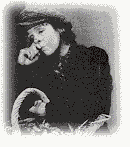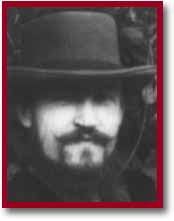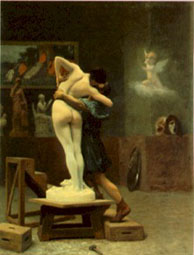 Before your reading
Before your reading
-
The title
-
Pygmalion: In
Ovid's Metamophosis, Pygmalion is a
sculptor who is not interested in women. Pygmalion, however, finds
himself in love with his sculpture, Galatea, and he caresses her and offers
her with all the gifts women like. At the end, Venus realizes his
wish and turn Galatea into a real woman. (Two paintings:
Pygmalion
And Galatea; Pygmalion)
-
A Romance: Putting
the Pymalion myth together with the idea of a romance, we can also think
of the Cinderella fairy-tale (whose modern versions are Working Girl
and Pretty Woman). This, however, is exactly what Shaw wants
to critique. What you should find out in the play, then, is what
kind of transformation happens in the play, and whether there is a romance
as we expect it.
-
Shavian (Shaw's) Style: It
will help if you have a general undersanding of Shaw's style.
-
stage direction --economical exposition
and suggestive of social background;
-
prefatory essay--used to express his
doctrines;
-
discussion in the play. Sometimes
Shaw calls his own plays Problem Play, Discussion Drama, Play of Ideas.
He also claims that "[p]rimarily, [his plays] are not plays: they are tracts
in dramatic forms." He regards social criticism as the most
important function of all art. (A Guide to Bernard Shaw,
Edward Wagenknecht, 1929, reissued 1971 pp. 3, 5, 16, 17; George
Bernard Shaw Page)
|
 Guiding questions for Act I
Guiding questions for Act I
|
-
Setting and Stage
Directions
-
The stage directions at the
beginning of act I, discuss the setting. What is the
setting? This setting brings together what two places? Are
these two places symbolic? What issues about money, class and spirituality
are raised in this act?
note: Picture
of St Paul's church, Covent Gardens (The setting of Act 1) &
the architect Inigo Jones
-
In what ways are the lighting
and sounds important in this act? (e.g. p. 12, when
Eliza Doolittle enters the scene, and p. 21, when Henry Higgins remembers
to give money to her.) Keeping in mind the mythic allusion of the
title, can you make more of the setting?
-
Eliza's room: How does this room, like
her appearance and the way she sleeps, reflect Eliza's social background
and her personality?
-
Characters--Act
I offers an overview of the major characters in the play, or a microcosm
of London society
-
How would you characterize the traits and
relationship of the mother (Mrs Eynsford Hill ), daughter(Clara Eynsford
Hill), and son (Freddy Eynsford Hill)? How would you compare and
contrast them with the flower girl (Eliza Doolittle)? In other words,
which of them strike you as being independant and active?
-
How would you describe the gentleman (Pickering)?
How does he compare and contrast with the note-taker (Higgins)? Pay
attention to their different treatments of the flower girl.
-
Why is Higgins so upset by Eliza's dialect?
(e.g. p. 20)
-
How do the divisions of social classes become
an issue in this act? How are class differences embodied in
the people's different treatments of the flower girl. How is language
related to class divisions?
-
In what ways are the issue of appearance
and reality raised?
|

|
 Guiding questions for Act II
Guiding questions for Act II
-
Setting and Stage
Directions
-
Describe the setting in Act II. How
is Higgins' room a contrast to Eliza's, which we see at the end of Act
I? What does the room as well as its decorations suggest about Higgins'
personality and life? How does the stage direction characterize Higgins
on pp. 26 & 27?
note: "Piranesis" (from
the first stage direction) -- Piranesi, Giovanni Battista (1720-1778),
"Italian graphic artist, famous for his engravings and etchings. . . .
Piranesi's collection of engravings entitled Carceri d'Invenzione (Imaginary
Prisons, 1745) greatly influenced 19th-century romanticism and also
played a role in the development of 20th-century surrealism. (from
Ecarta
bio)
example of Piranesi's work:
Imaginary
Prison & Perspectives on Rome
-
Explain how the clothes worn by Higgins and
the flowergirl reflect them. Does Eliza's change of costume suggest something
about her change of life?
-
Characters: Act
II shows two verbal encounter (or fights) between the play's major characters
(first Higgins and Eliza, and then Higgins and Mr. Doolittle), who use
different tactics to get what they want. Pay attention to their different
value standards (esp. in terms of money), their language and changes of
tone, and enjoy it!
-
In the dialogue between Higgins and Eliza,
what more do we find about the two's personalities? What does Eliza
want to achieve? And how about Higgins?
-
In the dialogue among Higgins, Pickerin, Eliza
and Mrs. Pearce, what kind of cautions do Pickerin and Mrs. Pearce give
to Higgins respectively? And how does Higgins respond to them?
Pay special attention to the way he changes his voice from "storming" to
one with "professional exquisiteness of modulation" to "beautiful low tone"
on pp. 32-33.
-
How would you describe Mrs. Pearce's
relationship with Eliza? Consider the suggestions she gives to Eliza,
as well as the way she bathes her.
-
What role does Mrs. Pearce play in serving
as a housekeeper for Higgins? Higgins says after their dialogue that
Mrs. Pearce thinks him "overbearing" while he is actually "shy," "diffident,"
and never feeling grown-up. Which of these two is a closer description
of Higgins, or both?
-
Describe Eliza's father, Mr. Doolittle.
Why does he come to Higgins' home? What does he want from Higgins?
What is his view of the different social classes? Why does he prefer "undeserving
poverty"(p. 49)? What will he do with the money from Higgins? Why
does he refuse ten pounds? What is his view of marriage?
Higgins finds his argument irresistible (p. 50), how about you?
-
Like Act I, money and religion
are brought up again several times in this act. How do the characters
(Higgins, Eliza and Mr. Doolittle) of different classes express different
views about money? Religion, likewise, is mentioned to reveal the
characters' sense of value. For instance, why does Higgins think
of his pupils as "sacred" ("teaching would be impossible unless pupils
were sacred" 41) at the same time he calls Eliza as "that thing," as well
as "insect" and "squashed cabbage leave"? What does Mr. Doolittle
think about clergymen as a career , when Higgins thinks that the
former has the eloquence of a priest or a politician?
-
This is a play about education, and
more specifically, learning English and learning to be a lady.
What are Eliza's lessons like? In their first lesson what is Higgins
like as a teacher? Is Eliza as a student?
In terms of learning to be a lady, what does she feel about being a lady
in this act (e.g. being clean, having fashionable dresses)?
|
 |
 Guiding questions for Act III
Guiding questions for Act III
-
Setting and Stage
Directions
-
The beginning of Act III is set in the home
of Mrs. Higgins, Professor Higgins's mother. How does the setting, as it
is described on pages 56-7, contrast with Professor Higgins's home? What
does this setting reveal about Mrs. Higgins? Judging just from the setting,
how does she differ from her son?
Note: Examples of William
Morris's wallpaper and carpet, Edward
Burne-Jones' paintings and Dante
Gabriel Rossetti's paintings; more about Morris
and Edward Burne-Jones
-
Characters: Act
III is composed of the two tests of the results of Eliza's education in
the two upper-class party scenes--Mrs. Higgins' at-home and the ambassador's
garden party. Pay attention to the social norms and manners shown
in these two parties, and how the uppe-class guests in these parties are
targets of Shaw's critique.
 At-Home At-Home
-
Higgins:Describe
the relationship between Mrs. Higgins and her son. Do you agree with
her assessment of her son's social skills? How would you describe his manners
and EQ during the "at-home"?
-
Higgins is described by his mother as being
"cynical" whe he makes his "we're all savages" speech (61). This
should remind you of his other statement about life's being "a series of
inspired follies" (31). Do you also think that he is too cynical?
-
As Professor Higgins and Colonel Pickering
are discussing Eliza with Mrs. Higgins, how would you characterize their
treatment of Eliza? Do they understand the implications of their
"experiment"? In what ways is their discussion of Eliza alarming?
Is Mrs. Higgins's right when she says that the two men treat Eliza as a
"live doll" (page 68)?
-
Eliza: When Eliza arrives at the "at-home,"
she is wearing a new dress. In what ways does this change of costume once
again suggest a "new" Eliza?
-
How would you describe and characterize Eliza's
behavior and "performance" during the "at-home"? Higgins says that
she is limited to talking only about health and weather. Does
she follow the limitations? What aspects of her speech reveal
that she is not yet a lady? The use of slang or the violation of
social conventions? How does her behavior compare and contrast with
Professor Higgins's behavior?
-
The Eynsford Hills (Mrs. Eynsford
Hill, Clara and Freddy): What new information and impressions
do you have about the mother, daughter, and son that you met at the beginning
of ACT I? How would you describe their manners and social position?
What does their use of language (e.g. Clara's use of "bloody") suggest
about them?
 The party at an Embassy
The party at an Embassy
-
In what ways in Eliza changing?
Is it only her pronunciation that is changing? Are her values and
self-identity also changing? How would you describe Eliza during her appearance
at the ambassador's party? Why do you think Shaw writes "¡K she walks
like a somnambulist in a desert" (page 74)?
-
Nepommuck: What is so "important" about
his whiskers? Being an interpreter, Nepommuck is also a language
specialist. In what ways is he different from Higgins? How
does he use his knowledge?
-
What ideas about love, marriage, and social
position do you find in this act? How would you describe the expectations
of women and their role in the family and society?
-
Language and class differences: This
Act ends with two surprises: 1. Nepommuck's revelation of Liza's being
a "fraud", and 2, Liza's saying at the end that "nothing can make [her]
the same as these people" (76). What do these two surprises
say about the relationship between language (manners) and class?
Who are the target of irony here? In other words, what does it mean
to be a lady? Having good pronunciation, good manners, or a lot of
money? What has Eliza learned so far about being a lady? What
kind of lady does she fail to be?
|
|
|
 Guiding
questions for Act IV Guiding
questions for Act IV
Act
IV takes place later in the night of the ambassador's party, when Higgins,
Pickering, and Eliza return to Higgins' home.
-
Higgins & Pickering:
What
do the two men do when they get home? What do they talk about?
Are they responsive to Eliza and her feelings?
-
Eliza: [read the stage direction
closely.] Why does Eliza get Higgins' slipper? Does he
expect her to? How does he respond after he finds the slippers?
Why is it appropriate that she later throws the slippers at him?
-
How does Eliza feel? Why is she upset?
What does she want? Why does she think getting married is like "selling
herself" (82-83)? Is her idea of buying and selling changed
from those she expressed in Acts 1 & II?
-
How would you compare and contrast Eliza as
a "lady" in Act IV with Eliza as a flowergirl in Acts I and II?
Has her education made her superior? Changed her?
-
Higgins says to Eliza, "Now you are free and
can do what you like" (82). Is that true? In what ways is Eliza
NOT free?
-
What does Eliza say to "shock and hurt" Higgins(83)?
Is there a symbolic meaning to Eliza returning to Higgins the ring he gave
her? What do you think the ring meant to Higgins when he gave it
to her? What did it mean to Eliza?
-
Toward the end of this act Eliza has another
costume change. Does this change also suggest a change in Eliza?
-
How would you characterize Eliza's relationship
with Freddy at the end of this act? How does her relationship with
Freddy differ from her relationship with Higgins? Does Freddy provide
something that Higgins does not? What does Freddy not have?
|
 |
 Guiding questions for Act V
Guiding questions for Act V
-
This act begins on the morning after the events presented in Act III. How
do Higgins and Pickering respond to Eliza's departure the night before?
How does Mrs. Higgins feel about it? After Mrs. Higgins explains Eliza's
behavior to the two men, they each react quite differently. How does
Higgins respond? How does Pickering respond?
-
What has happened to Alfred Doolittle since Act II? In what ways
does his change in social class and position mirror Eliza's? How does Eliza
feel about her own social change? How does her father's response differ
from Eliza's?
-
This play has had much to say about marriage. What does Doolittle mean
when he says that marriage is not "the natural way" (101)? Would Pickering
agree with him? Would Eliza agree?
-
When Eliza talks with Higgins and Pickering, she presents her view of being
a lady, including the idea that "the difference between a lady and a flower
girl is not how she behaves, but how's she's treated" (98). Do you
agree with her? After reading the play, what do you think a lady
is?
-
Has Higgins learned something new when he says to Eliza, "I cant turn your
soul on. Leave me those feelings; and you can take away the voice and the
face. They are not you" (103-4)? How does this differ from his response
to Eliza in Acts I and II?
-
How would you characterize the relationship between Eliza and Higgins in
Act V? They seem to have different goals for life. What does Higgins
view as meaningful in life? What does Eliza want in her life? Can
you see positive values in both Eliza's and Higgins' views?
-
Like the sculptor Pygmalion, Higgins claims "By George, Eliza, I said I'd
make a woman of you; and I have" (108-9). How, though, does this play offer
a revised version of the original Pygmalion myth?
-
Why does Eliza turn around as she is leaving Mrs. Higgins' house and offer
advice to Higgins'¦ about his gloves, ties, cheese, and ham? What
does this suggest about their relationship?
-
What does this play suggest as possible results of education? Do teachers
and students alike need to be concerned about those results? What does
the play suggest about the differences between social classes? What does
it suggest about marriage and family?
|
 |
 About the postscript
About the postscript
[A
Note on H.G.
Wells (1866-1946): "a man with
humble origins who had had to struggle against much adversity to make his
name as a writer, though when breakthrough came, he achieved rapid
celebrity. . . .Throughout a long career as a writer Wells was very
conscious of the power of physical science to transform life, either for
the worse. . .or for the better. . . . [HisThe Time Machine
(1895) explores ] the remote future . . . set in the year 802701,
when evolutionary development has divided humanity into two distinct species;
one descended from the 19th-century bourgeoise, the other from the proletariat,
who live underground and prey on the former" (An Outline of English
Literature 364). For more info, please go to H.G.
Wells site ]
-
Endings -- Do you prefer the more open
ending of Act V or the endings Shaw presents in the postscript? At
the end of Act V we see Eliza's self-contradictory attitudes toward Higgins.
Do you see similar contradictions in this postscript? How do you
explain the various amorous implications (e.g. Eilza's jealousy of other
women; her secret wish to be alone on a "desert island" with Higgins)?
-
Romance --
-
How does Shaw define
romance here, to be distinguished from the current trend of sentimental
melodrama?
-
What are the reasons
(about Eliza's freedom, Mr. Higgins' love for his mother and his unchangeability,
and about the strong's need of the weak) he offers here to justify Eliza's
marrying Freddy? Are you convinced?
-
Does Eliza live
"happily ever after" with Freddy?
-
Education -- Of
all the characters Clara Einsford-Hills seems to be the most snobbish
as well as pitiable. How is she changed in this the postscript?
How does Life "start to move with her"?(pp. 118-20)
 The Play as a Whole
The Play as a Whole
-
The structure of the play:
-
The usual structure of Shaw's Discussion play
is: exposition, complication and discussion. Do you
find this structure in the play?
-
The theme of Education/Creation:
-
The five acts of the play can be divided into
three parts: Act 1--a general introduction, Acts 2-3 -- the
bet and its fulfillment, and Acts 4-5 -- Eliza's "independence"
from Higgins. What does Eliza achieve at each stage?
-
How do the other characters (except Mrs. Higgins
and Pickering) get educated in the play? How is Mr. Doolittle's similar
to and different from Eliza's?
-
Social Structure and Class Differences
--
This play has characters mostly from the working class and the upper
class (except that Mr. Doolittle, at the end, takes on "middle-class morality").
How are these two classes presented? Be specific about the differences
in the people of the same class: for instance, between Mr. Doolittle, Mrs.
Pearce and Eilza, and between the poor genteel (the Eynsford Hills) and
the rich (Mrs. Pearce) and the rich intellectual ( Higgins and Pickering).
-
The title of the play: After finishing
the play, you must know that Pymalion is very different from the original
myth. How are the functions of using this myth, then? In other
words, why does the play want us to remember mythic, fairy-tale and
legendary figures such as Pygmalion, Cinderella and Frankenstein's monster?
-
The discussions in the play: what do
you think about the discussions in the play? Are they boring or witty
and enlightening? Do they come naturally out of the development of
the plot, or are they distracting and digressive?
[For your reference: A critic Eric
Bentley thinks that the play is a "personal play" (as opposed to discussin
play, another type of Shavian plays), in which discussion is "an emanation
of conflict between persons," or an integral part of the plot development
(Bloom p. 13).
-
Comparison of the play with the two filmic
versions. Besides the fact that the two films are more dramatic
than the play, there are some major differences between the play and the
two films.
-
The characterizations of Freddy, as well as
the arrangement of the midnight scene, in which Eliza leaves Wimpole Street
and joins Freddy.
-
The role of the father, Mr. Doolittle (In
My
Fair Lady, he appears independently from Eliza and he does not show
up at Mrs. Higgins' at the end).
-
The settings and the presentations of the
two trials of Eliza's progress.
-
The ending of the two films are similar to
each other, but different from the original play.
|

 Shaw, George
Bernard (1856 - 1950)
Shaw, George
Bernard (1856 - 1950)

 from
BBC Online
from
BBC Online
